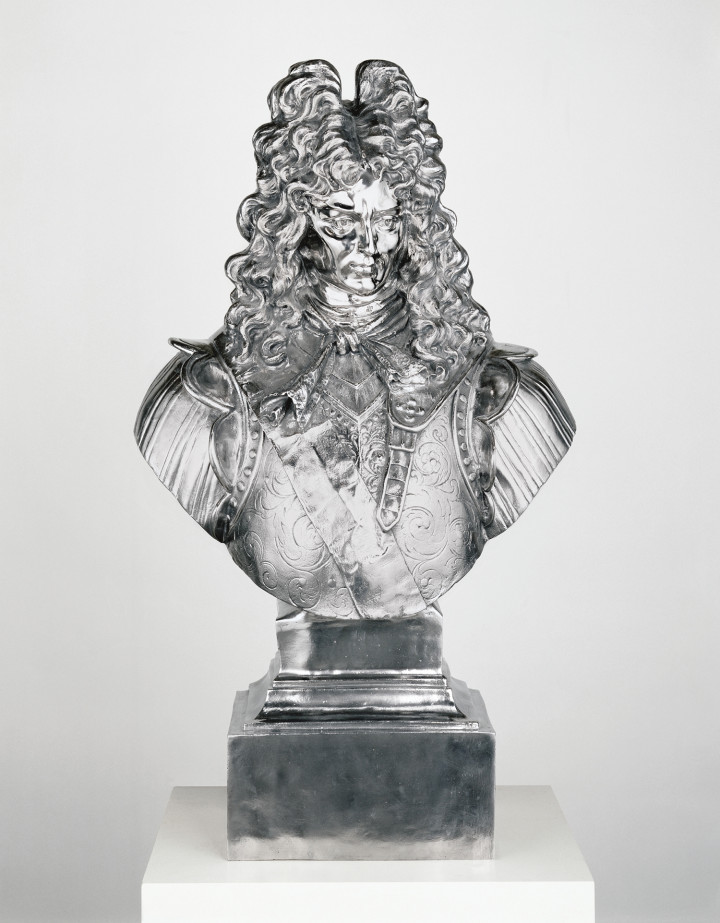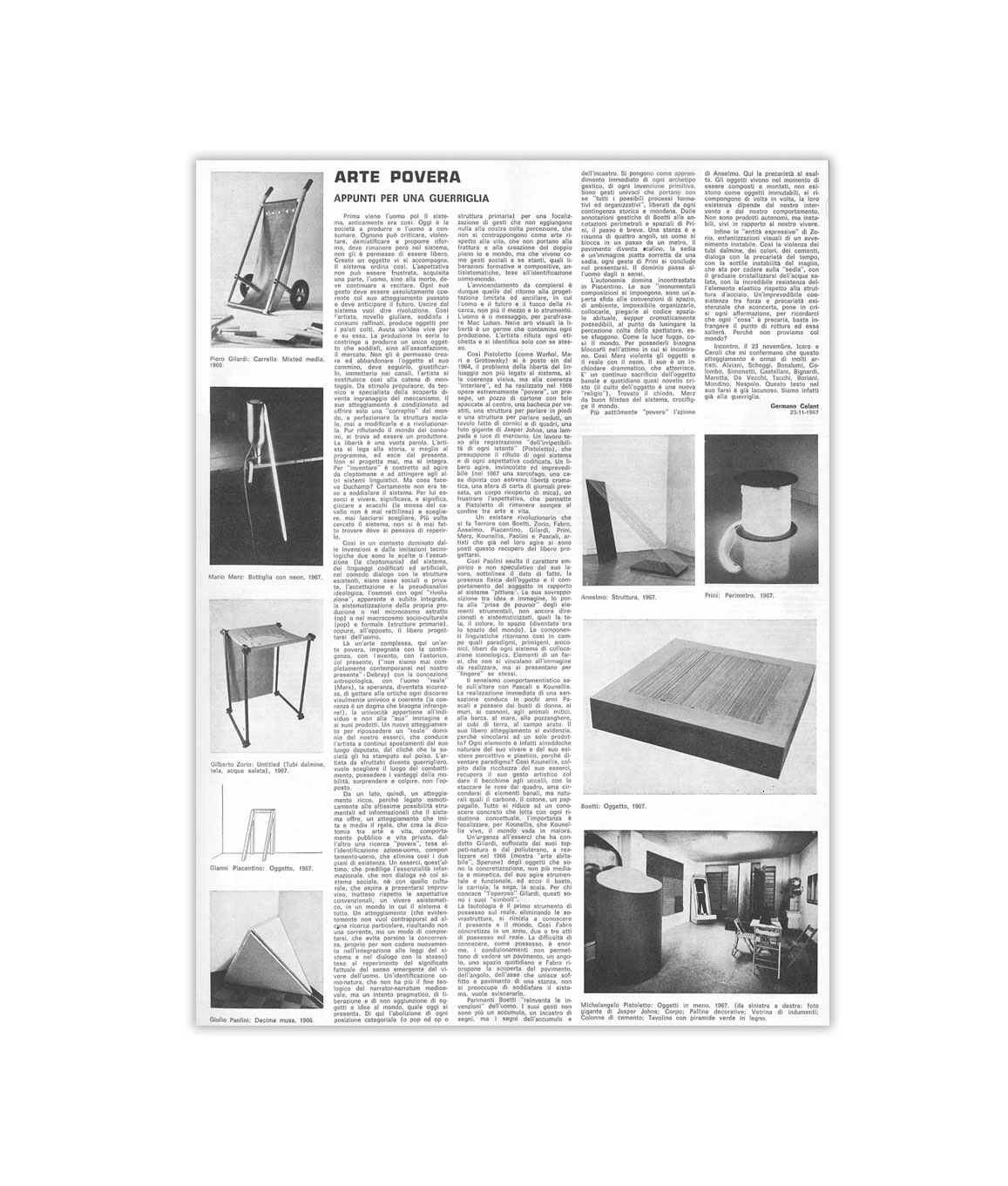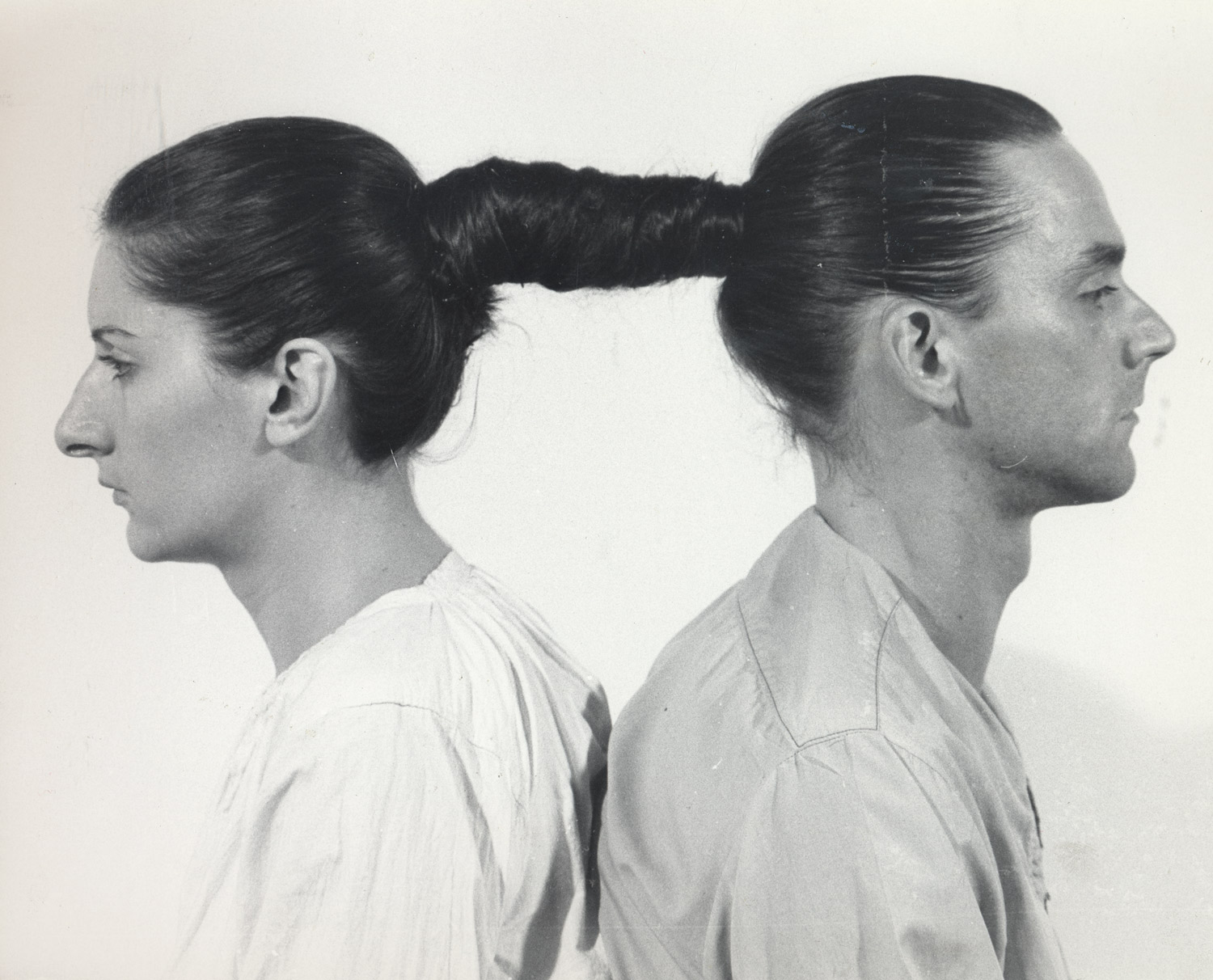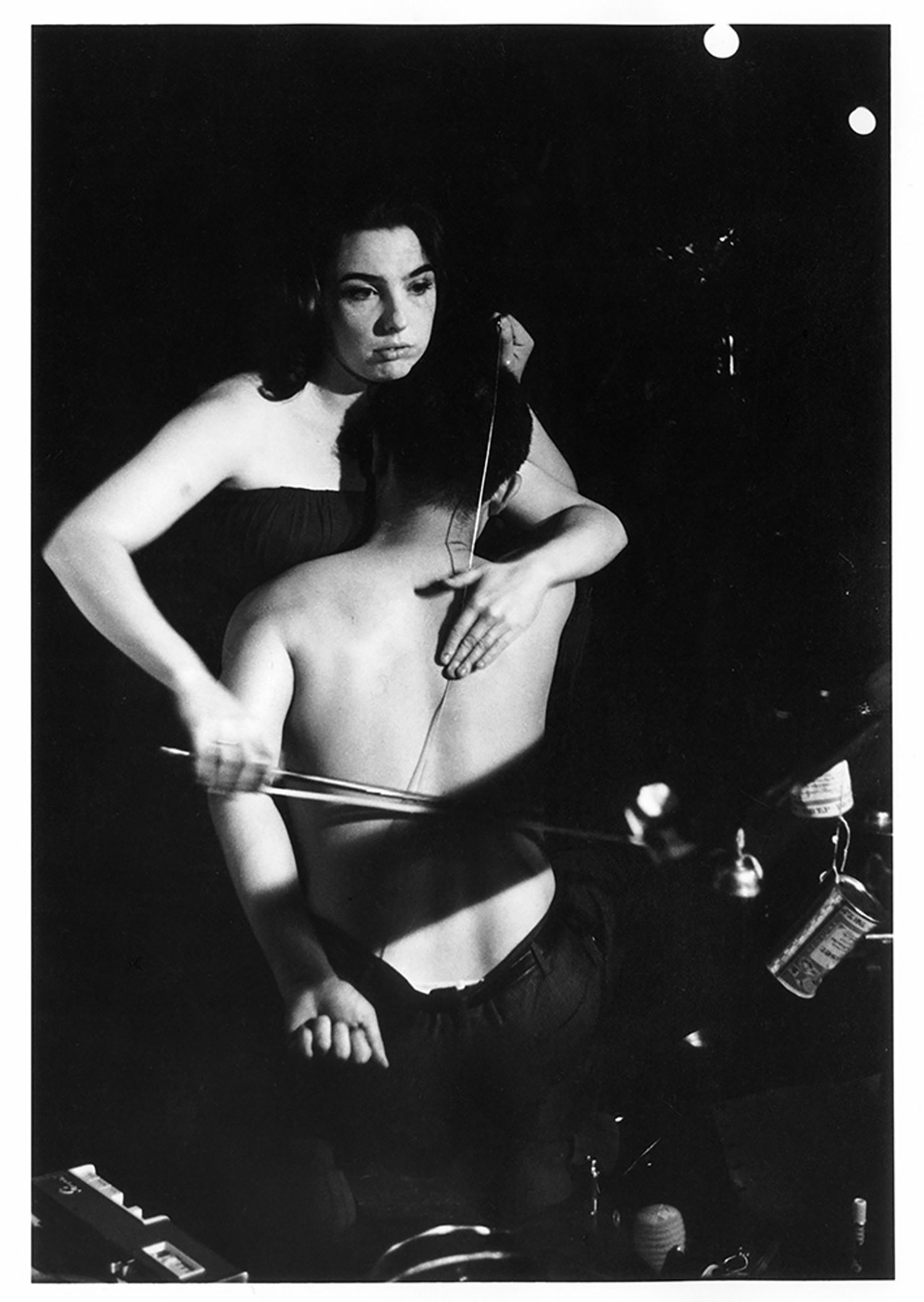
Giancarlo Politi: I can’t imagine you in your studio, because many of your works are made in a foundry. How does your work come about?
Jeff Koons: When I’m at home, where my studio is also located, the studio functions as an office and as a place where I pull away from the external world and reflect on it. I’m not actually in production there; the studio is a refuge — a place where I’m in a state of rest with respect to the outside — and a place of contemplation.
GP: You speak of objects, and never of sculpture. Why?
JK: First of all, I see myself as an artist, and not as a sculptor. Most of the time my work operates in a three-dimensional realm, possibly because it is more substantial than the two-dimensional realm of illusion. It defines a reality for me. In the system I was brought up in — the Western, capitalist system — one receives objects as rewards for labor and achievement. Everything one has sacrificed in life — personal goals or fantasies, for instance — in the effort to obtain these objects, has been sacrificed to a given labor situation. And once these objects have been accumulated, they work as support mechanisms for the individual: to define the personality of the self, to fulfil desires and express them, and so on…
GP: What meaning does your work have for you?
JK: In the past my work has always been about my personal, intellectual development. More recently it has involved the external world and how it functions socially. Whereas in the past I was more concerned with defining states of being that can be achieved by the individual, in more recent times I’ve extended my interest to social states of being that are more and more removed from what I could accomplish now, within my lifetime. Also, the work is being directed, since I have been defining a social state of being. I have also been redefining a personal state of being. On both the personal and the social level, though, my goals have been knowingly unachievable — biologically, psychologically and economically they just aren’t possible at this time.
Lately, the work has taken on a dimension of alienation of the physical self. In the body of work I called “The New,” I was interested in an individual psychological state tied to newness and immortality: the Gestalt came directly from viewing an inanimate object — a vacuum cleaner — that was in a position to be immortal. Now the works, particularly the cast pieces, are maintaining the integrity of the object to such a degree that my hand, my own physical involvement, disappears. Nothing is done to alter the viewer’s confidence in (or the psychological perception of) the object. Any diminishment or increase of its imperfections would affect its ability to convince in the arena of display; and total confidence, total conviction, are essential if these works are to achieve their goal.
GP: Is your work formed intuitively, or does it stem from market research?
JK: My work is intuitive, but I also expose myself to as much information as I possible can, so I think it would be fifty-fifty. It involves directly seeing the manipulation that takes place within oneself and how one’s desires are directed, but then it also relies on the biological self, an intuitive self. In this sense my work differs from, say, Conceptual art; my work is more ‘ideal’ than conceptual. Conceptual art was always creating support mechanisms to hold itself together, to cover up any lies within its structure. The intuitive quality of my work precludes all need for deception. If a flaw is there, it is part of the system. That’s what I mean by functioning intuitively instead of trying to create an artificial support for the work.
GP: Does art have a social dimension?
JK: Yes. I feel it’s the only valid way for art to exist, and the only way it can truly function. If art is not directed toward the social, it becomes purely self-indulgent, like sex without love. Whereas if art is functioning in the social sphere and helping to define social order, it’s working purely as a tool of philosophy, enhancing the quality of individual life and redirecting social and political attitudes. Art can define an individual’s aspirations and goals as other systems — for instance, economics — are defining them now. Art can define ultimate states of being in a more responsible way than economics can, because art is concerned with philosophy as well as with the marketplace.
GP: Your work is very new. Do you think you are still in the field of art, or have you gone beyond?
JK: My work, hopefully, is showing new possibilities of art. At the same time I am trying to look back, to see what attributes of art have been performing psychologically, and to work with those attributes in defining a new area, a situation in which the individual will have pure confidence in his position by virtue of the objects with which he surrounds himself. These objects will not be looked at in a contemplative way, but will only be there as a mechanism of security. And they will be accessible to all, for art can and should be used to stimulate social mobility. In fact I envisage the formation of a total society where every citizen will be of the blue blood. In such a society the individual will exist in a state of entropy, or rest, and will inhabit an environment decorated with object art that is beyond critical dialogue.
Helena Kontova: Does that mean you’re working for the present or for the future?
JK: The kind of transformation I’m talking about cannot be achieved overnight. Nevertheless, my work is being directed along these lines right now. My bust of Louis XIV (1986) is about the confidence that can be placed in a monarchic situation; it’s almost speaking about the ruins of Versailles. The stainless steel alludes to proletarian luxury, a necessary component of any political support system; and the light reflected in the shadows of the steel, which takes on a cerulean tone, reinforces a sense of intimacy and passiveness — the same kind of intimacy or passiveness one may feel, say, in a public square with a fountain or with a sculpture. Although the work is functioning in that area now, it needs time, just as the general economic situation needs time.

HK: For whom does the work function in this idle way you are describing?
JK: It functions for everyone. For the lower and middle class it will lead to an ultimate state of rest; for the upper class it will lead to an unprecedented state of confidence. So all members of society would benefit. There would be no losers.
Gregorio Magnani: Can you explain what you mean by “proletarian luxury?”
JK: The polished stainless steel has a reflective quality which is associated with a luxurious item. In my work the situation is set up so that the individual from the lower classes feels economic security in a fake situation. Polished objects have often been displayed by the church and by wealthy people to set a stage of both material security and enlightment of spiritual nature; the stainless steel is a fake reflection of that stage.
GM: Don’t you think your bust of Louis XIV and many of the other works, as well, can be seen as enbodiments of the confidence that can be placed in a multinational situation?
JK: The bust of Louis XIV is a symbol of the confidence that can be placed in an authoritarian regime but it is also a symbol of all labor exchange systems in history, including capitalism. What is being communicated is a decriticalized political situation. As Louis XIV is not performing as a monarch anymore, the lower class individual can feel comfortable that he can not be betrayed once he has gone into this state of entropy, and the upper class is able to partake in a false security and therefore can not betray the lower classes. Once the object has seduced the viewer into the acceptance of this political situation, there is no way for the lower class to revolt and there is no way for the aristocracy to betray again. If that were to occur, and it could not, the aristocracy would be biting its own tail.
GP: Is there any connection between your work and the work of the past?
JK: I’m deeply indebted to Marcel Duchamp, whose work, because it was directed outward from the artist and into the social arena, had a liberatory value for me. My work is connected with the past to the extent that it wishes to use the past psychologically, to reap the benefits inculcated in works of art by other artists — for example, the sense of entropy or equilibrium, devoid of critical dialogue, that is present in certain statuary.
Giacinto Di Pietrantonio: A lot of people have been talking about the component of desire in objects. Are you acquainted with this philosophical debate, and do you see a relationship between your ideas and theirs? I’m thinking in particular of Jean Baudrillard.
JK: My art has not been directed toward defining someone else’s philosophical point of view; it has often been admired for the way it has enhanced these points of view. Baudrillard envisages an end time when art will be purely nonfunctional, a term of economic exchange; I see the ultimate role of art as one of pure function. Where I see art going, its exchange value, its economic substructure, will be removed; it will function solely as a means of support and security. Seen from this point of view, my work has strong biological implications; the encasement of the vacuum cleaners, the idea of removal and protection, and especially the “Equilibrium Tanks,” where you have water sustaining a basketball, are all very womblike.
Elio Grazioli: How is it possible for the immortality of the object to create a sense of security in the subject? Wouldn’t it have just the opposite effect?
JK: Any insecurity it might create would be generated by the realization that one is not living in a state of entropy, or equilibrium, and by the consequent desire to return to the womb — which, of course, is an unachievable goal.
EG: How do you go about choosing an object, if you want to eliminate its metaphorical quality? If you want to get away from a situation of critical evaluation where a vacuum cleaner is a breathing machine, or a basketball floating in a tank of water is a foetus?
JK: I think my work still has that metaphorical value. The statuary body of work that I just used had it, and even the “Luxury and Degradation” show, the “Jim Beam” work, used the metaphors of luxury to define class structure, a pail being a symbol of the proletariat, and a Baccarat Crystal Set (1986) the edge of the upper-middle class. Now the work is functioning on metaphors of art. The bust of Louis XIV is a metaphor for art in the hands of a monarch; the vase of flowers (Flowers, 1986), art working to create a sense of economic stability; or the trolls, a metaphor for mythology. So I’m still dealing with metaphor, in order to produce a false front that will have substantiality to it. There has to be a false front under the present economic conditions, but it has to have stability to it, and confidence in itself.
HK: How does your socio-political intention relate to, say, the American system as represented by Reagan and his following?
JK: With Reaganism, social mobility is collapsing, and instead of a structure composed of low, middle, and high income levels, we’re down to low and high only. Reaganism has defined two ends, and these are the areas where insecurity is greatest. My work stands in opposition to this trend.
GP: Why do you work in series?
JK: In bodies of work like “The New,” the “Equilibrium” pieces, and the “Jim Beam” work, I was working with the integrity of the artist, opening myself up to what art can be rather than getting locked into a particular aesthetic. The latter, for me, would be very boring. I prefer to look at my context from another angle continually, to enhance the core of my work and to define the parameters, to expand them. It also addresses a marketing issue, namely, that art has to continue to change. If I want to leave the door open to change, I also need the freedom to repeat myself.

GP: Two or three years ago you worked with images that came from advertisements. Can you explain why?
JK: My original concern was to clarify the content of my work, so that when a viewer came into contact with “The New,” or a doubledecker (New Shelton Wet/Dry Doubledecker, 1981), he would understand what it was about. For instance, near the object I would place things like a cigarette ad that would say “New Philip Morris Ultralight 100s” or a car ad that would say “New Toyota Family Capri” as a guide to the context of the work. In the “Equilibrium” work I formed a triad based on the Nike ads, bronzes, and equilibrium tanks, which functioned together to define one context. In the “Jim Beam” work, where I worked with liquor advertisements, the purpose was not so much to direct the viewer as to define social class structure. The Aqui Baccardi ad (1986) is defining a mentality and the desirability of luxury on an income of $15,000 or less. It says, “let’s gamble with our lives, let’s throw all our chips up into the air, and wherever they fall we’ll accept it.” Whereas the Frangelico ads are defining a $45,000 and up income, which is more concerned with being lost in one’s own thought patterns. These two publics are being deceived on different levels of thought, because they’re educated in abstraction and luxury on different income levels. The upper class would love to pull an individual with ambition and gumption from a lower class to the verge of the upper class, because that’s where the big takings of power are. If they can have you move through social mobility up to the edge of the upper class, they can go in and in one killing get 250 chips; but you’ll never break through, because luxury and abstraction are the guard dogs of the upper class. And the pursuit of luxury is degradation.
EG: Isn’t this the old problem of the avantgarde, where the artist, from the height of his intelligence, dictates that which you must and must not do? He gives you power, but he takes it away at the same time.
JK: My new objects reflect desire, they don’t absorb desire. It’s entropy, it’s energy that’s not being lost, but is in a state of rest. It’s not an absorption.
GM: How can your art have such an important social effect if the circulation is controlled by a limited circle of people?
JK: The freedoms that are fought for by art are never fought in the streets. It is a dialogue among few people which may eventually be reflected in the streets but isn’t created there. However, the people who are collecting and supporting my work are the ones that are in the same political directions as I am. They are responding to a dissatisfaction in art, politics, in philosophy. I feel aligned to them. Hopefully the ideas in my work will be disseminated through them to a larger audience.
GP: You are making very new and aggressive art… how do you fit into the New York situation? Do you look at other artists, or talk with them, or do you work alone?
JK: I’ve been in New York since the end of ’76, but have been participating in an open dialogue with the community only since ’79. Until recently I have felt like an outsider, although I have always been directly connected with the center of the art community. I don’t feel like an outsider right now; if anything I have to impose an outside position. I live down in the Wall Street area only for exclusion, so that I don’t have to walk out on the street and be confronted with SoHo or run into a specific dealer, and so on.
GP: What do you think the future of the art market in America will be like? Do you think galleries should change their strategies over the next ten years, in the light of developments like the recent boom in corporate art buying?
JK: I believe the responsibility of art must be controlled by the artist. I don’t feel that the galleries truly care, or can be placed in a position to assume the responsibilities of carrying the flag, because most are purely controlled by economics. On the other hand, I think that the New York market at this moment is functioning almost in a Reaganist term of a true marketplace. So far the market has been very positive, because there are so many opportunities for the artists.
GP: Don’t you think that the power of corporations is influencing taste?
JK: I haven’t had corporations directly involved in purchasing my work, other than Chase Bank. They seem to participate in the art world only as a market signal, an indicator of speculative value.
GP: Do you think speculation is still important in art, more than status, for instance? Because for investments the stock exchange is probably a better bet sometimes.
JK: People should be able to state their opinion in art, and help to direct the course of art. But there are greater profits to be made in other areas, and they can be made much more rapidly than in art.
from Flash Art n°132, 1987





